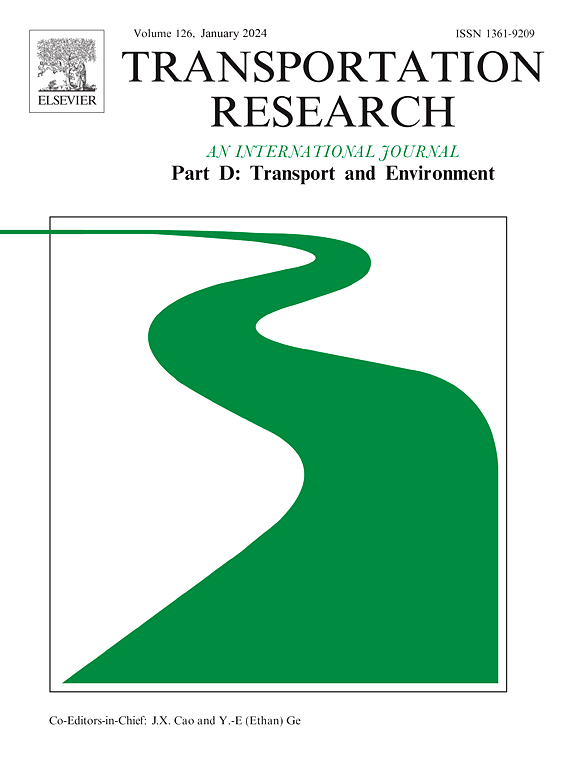Nonlinear associations between various residential dissonances and car dependency
IF 7.3
1区 工程技术
Q1 ENVIRONMENTAL STUDIES
Transportation Research Part D-transport and Environment
Pub Date : 2025-04-20
DOI:10.1016/j.trd.2025.104760
引用次数: 0
Abstract
Residential dissonances have been treated as key factors influencing car dependency. However, few studies explore nonlinear effects of various residential dissonances on car dependency. Using 2018 Shanghai data consisting of 1,118 adults, we used gradient boosting decision trees models to examine relative contributions and nonlinear impacts of residential dissonances on car dependency. Results showed that residential dissonances, particularly objective residential dissonances, were important to car ownership and usage. Moreover, residential dissonances nonlinearly affected car dependency. Residential dissonances related to proximity to downtown and building density increased car usage. When street connectivity was below preferred, it exhibited a U-shaped relationship with car usage. Last, the effects of residential dissonances on car usage differed in purposes. Some dissonances predictors influenced commuting and non-commuting car usage differently, while some dissonances predictors affected only one of them. These findings offer new insights for scholars and policymakers to advance sustainable transportation and walkable urban design.
各种居住失调与汽车依赖之间的非线性关联
住宅不和谐一直被视为影响汽车依赖性的关键因素。然而,很少有研究探讨各种居住不和谐因素对汽车依赖的非线性影响。利用2018年上海1118名成年人的数据,我们使用梯度提升决策树模型来研究住宅不和谐因素对汽车依赖的相对贡献和非线性影响。结果显示,居住不和谐因素,尤其是客观居住不和谐因素,对汽车拥有和使用具有重要影响。此外,住宅不和谐因素还对汽车依赖性产生了非线性影响。与靠近市中心和建筑密度相关的住宅不和谐因素会增加汽车使用率。当街道连通性低于首选水平时,与汽车使用率呈 U 型关系。最后,住宅不和谐因素对汽车使用率的影响因目的而异。一些不和谐预测因素对通勤和非通勤汽车使用率的影响不同,而一些不和谐预测因素只影响其中一种。这些发现为学者和政策制定者提供了新的见解,有助于推进可持续交通和步行城市设计。
本文章由计算机程序翻译,如有差异,请以英文原文为准。
求助全文
约1分钟内获得全文
求助全文
来源期刊
CiteScore
14.40
自引率
9.20%
发文量
314
审稿时长
39 days
期刊介绍:
Transportation Research Part D: Transport and Environment focuses on original research exploring the environmental impacts of transportation, policy responses to these impacts, and their implications for transportation system design, planning, and management. The journal comprehensively covers the interaction between transportation and the environment, ranging from local effects on specific geographical areas to global implications such as natural resource depletion and atmospheric pollution.
We welcome research papers across all transportation modes, including maritime, air, and land transportation, assessing their environmental impacts broadly. Papers addressing both mobile aspects and transportation infrastructure are considered. The journal prioritizes empirical findings and policy responses of regulatory, planning, technical, or fiscal nature. Articles are policy-driven, accessible, and applicable to readers from diverse disciplines, emphasizing relevance and practicality. We encourage interdisciplinary submissions and welcome contributions from economically developing and advanced countries alike, reflecting our international orientation.

 求助内容:
求助内容: 应助结果提醒方式:
应助结果提醒方式:


